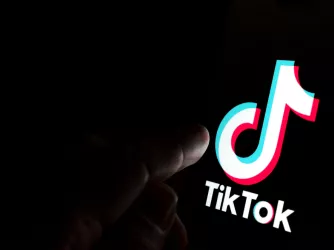Table of Contents
Administrators Defend Bias Response Teams, But Shy Away From Transparency

On Monday, Inside Higher Ed published a lengthy defense of “bias response teams”—teams largely composed of administrators and law enforcement who direct a university’s response to reports of offensive language or conduct, usually (but not always) under the guise of educating the offending speakers about the impact of their speech. But the same administrators are unwilling to back up their claims, declining to provide details about how they respond to particular incidents. As Inside Higher Ed’s Jake New reports:
Ohio State declined to offer detailed information about the incidents its team has investigated, but Christopher Davey, a spokesman for the university, said incidents may “involve bias or hate as a result” of age, ancestry, color, disability, gender identity or expression, genetic information, HIV/AIDS status, military status, national origin, race, religion, sex, sexual orientation, or veteran status[.]
“The Ohio State University is committed to creating a diverse and welcoming community for all students, faculty, staff, alumni and visitors,” Davey said. “Like universities around the country, Ohio State has found that maintaining such an environment requires a transparent effort to learn about and address incidents of bias and discrimination on our campuses. BART generally does not investigate incidents and does not have authority to issue sanctions, but does work to provide help for anyone who needs immediate assistance and support.”
Note what’s going on here. While proclaiming through a spokesperson the need for a “transparent effort,” Ohio State “declined to offer detailed information” about any specific incidents. Ohio State—whose Bias Assessment and Response Team (“BART”) is described by Inside Higher Ed as the “model” for institutions across the country—solicits reports of a broad range of speech or conduct, much of which the university acknowledges doesn’t rise to the level of violating law or university policy.
‘Response’ Is the Operative Word
It’s not necessarily the reports that matter, but how a university responds. And at Ohio State, there’s reason to be concerned. For example, the Ohio State University police chief, in an article posted on the Bias Assessment and Response Team’s website—entitled “How OSU Police respond to incidents of bias or intimidation”—acknowledges the First Amendment rights of offensive speakers, but then suggests that a broad range of clearly protected speech may be a criminal act (emphasis added):
These discussions can be emotionally charged, animated, even strongly worded yet remain voluntary, civil and within the constraints of the law.
There are limits however, especially when an individual or member of a protest group verbally or physically abuses or intimidates another person. A criminal assault occurs if the attack causes or is likely to cause physical harm to another person. Disorderly conduct occurs if the verbal confrontation causes another to be alarmed, threatens harm, provokes fear, is insulting, taunting, or challenging to the degree that a violent response is provoked.
To give the benefit of the doubt to the police chief, he could be referring to the violent response as being disorderly conduct. But the focus of the rest of the statement remains on whether a speaker has committed an offense:
The best suggestion if verbally insulted or confronted by someone with whom you strongly disagree is to not engage in debate. Ignore the person if you can and walk away. If you believe that you have been the victim of a crime in these situations act civilly and calmly tell the person you are offended by their comment and you want them to stop or you will call the police. If the verbal insult continues call OSU Police, then ask for others to remain as witnesses on your behalf. [...] The determination as to whether or not a crime has been committed will be based on the nature of the verbal confrontation, your feelings and reaction to the abuse and your ability to convey this clearly to the reporting officer.
If the message that bias response teams wish to send is that offended students should not respond with more speech, but should instead summon administrators and police, that should give us pause. (To be fair, another article posted on the BART website suggests that offensive online speech should be addressed in face-to-face conversations, which is good advice. Unfortunately, that same article first suggests attempting to delete the offending post. But at least neither suggestion involves summoning an administrator to do the speaking.)
The credibility of the efforts of a “bias response team”—are they simply responding with more speech to persuade offending speakers, or are they threatening investigations, hearings, and sanctions?—turns on how the team responds. Knowing that, however, requires transparency, and many universities are loath to shed sunlight on what they did in response. When universities do disclose incidents that have occurred, they’re often whitewashed, vague synopses.
Transparency Matters
Ohio State, for example, provides little in the way of transparency. While the university provides statistics, it only occasionally mentions specific incidents. For example, in 2012 the BART received 41 reports concerning a “newspaper advertisement that expressed hate toward Muslim student organizations.” But what did administrators do in response? That matters, but the lack of transparency means that nobody knows. (Unfortunately, providing even this information puts Ohio State ahead of most institutions, which do not share any details about reports or their responses.)
Transparency matters because what happens when students are summoned by administrators matters. If an administrator is going to wear two hats, serving as either educator or punisher, how is a student or faculty member to know which hat the administrator is wearing at any given time?
Because transparency is important, FIRE is using public records requests to explore universities’ Bias Response Teams and how they respond. Yet universities still resist. The University of Oregon—whose Bias Response Team (BRT) leadership took the time to be interviewed by Inside Higher Ed—decided that how its BRT responds to offensive speech is not a matter of public interest, demanding that FIRE pay over $1,400 to review its records. Since being paid two months ago, Oregon has produced a scant 69 pages of records. Ohio State, for its part, produced one year of records of students’ complaints, but declined to produce records relating to the BART’s responses—the part that matters—because, in its view, it would be too difficult to provide that many records. Another institution, within hours of claiming it had no records whatsoever, deleted its bias response team’s website.
Of the institutions that have produced records, some demonstrate that administrators are mindful of First Amendment rights, careful to inform students of their intent, or structure their responses to provide resources to aggrieved students who may not be aware of the resources available to them, rather than to intervene with the offending speaker. Others, including the University of Northern Colorado, where a professor was warned that he should discontinue discussing controversial issues because of the possibility of being subjected to an investigation, are troubling, at best. Whatever the merits of bias response teams, the lack of—and resistance to—transparency is disconcerting. Intent, as bias response teams often tell campus constituents, doesn’t matter—impact does.
Recent Articles
FIRE’s award-winning Newsdesk covers the free speech news you need to stay informed.

FIRE to SCOTUS: TikTok ban violates Americans' First Amendment rights

California and other states are rushing to regulate AI. This is what they’re missing

One day after FIRE lawsuit, Congress passes changes to filming permits in national parks
